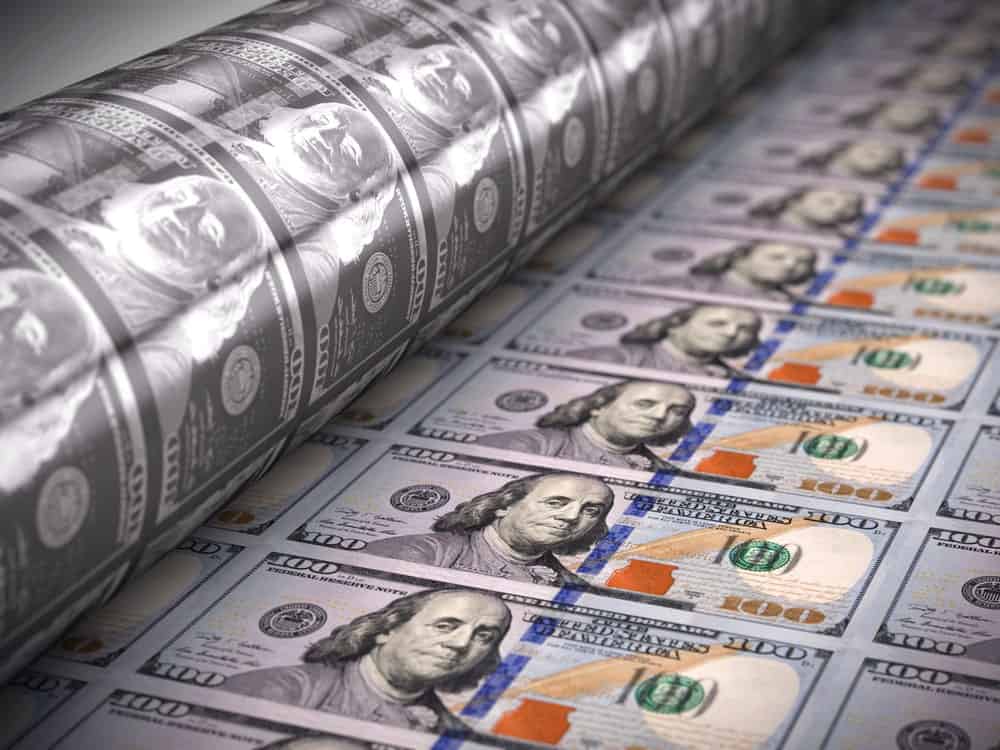At its first policy meeting of 2020, the Federal Reserve didn’t change much. As expected, the Federal Open Market Committee decided not to raise interest rates. The Fed will keep repo operations in overnight money markets going until April.
But Fed Chair Jerome Powell did walk somewhat of a tightrope trying to explain what the Fed is doing. The U.S. central bank has expanded its balance sheet by $390 billion since September. But one cryptocurrency has done the opposite.
Many market watchers have called the Fed’s massive liquidity injections into overnight repurchase markets “QE Lite” (Quantitative Easing Lite). But there’s nothing lite about it. The Federal Reserve has expanded its balance sheet at a feverish rate of $78 billion a month since Sept. The last round of quantitative easing in 2012 was only $40 billion a month.
But Fed Chair Jerome Powell insists it’s not intended as economic stimuli like QE1, QE2, and QE3. Those were recession fighting or preventing measures. This is just a technical adjustment to keep overnight lending markets liquid and banks flush with cash.
But if banks are low on cash, that’s a market signal that too many people are withdrawing and borrowing, and not enough people are depositing. No wonder there’s a massive credit bubble expanding in the U.S. economy.
The U.S. Dollar Is Inflationary Money
By pumping the repo market full of so much cash in such a short period of time, the Federal Reserve is sending a different signal. They’re telling banks, keep lending, keep investing in riskier assets like unsecured loans and credit cards (and the stock market).
Nobel Prize-winning economist Friedrich Hayek’s research into the business cycle suggests this signaling by central banks is what causes massive economic booms followed by busts that lead to a recession or even depression.

Printing of 100 USD bills
But proponents of central bank interventions say monetary policy is a powerful way to spur an economy out of recession or prevent it from collapsing into one.
Either way, when the Federal Reserve undertakes an expansion of the money supply to achieve a macro effect, it has consequences for individuals holding U.S. dollars. Their dollars lose purchasing power because there are more of them. And the more of anything, the less valuable it is in a market economy.
Economists and policymakers say there is low inflation in the U.S. dollar economy today. The Fed has even suggested it may be problematically low. But dollars certainly buy less stock than they did a year ago. It could be the companies are worth more, but the rapidly expanding money supply, along with corporate multiples like price-earnings to growth ratio suggests it’s inflation.
Binance Coin Is Deflationary Money
Money is a product, and like all products, there should be a free market of competing versions so the people who use it have different options to choose from. Cryptocurrency is making that a reality. The Dollar is money with a certain design philosophy built-in. It’s designed to move around quickly because its value is constantly, more or less, steadily evaporating.
But while the Fed increased the supply of Dollars, Changpeng Zhao, the founder of Binance, decreased the supply of Binance Coin (BNB). Binance holds quarterly coin “burns,” in which it actually destroys a certain amount of the limited supply of BNB.
The tokens are destroyed by locking them up in a way that makes them mathematically irretrievable so they can never be spent. The amount burned was based on a percentage of Binance’s quarterly profits. Even though they changed it, they still hold their burns quarterly.
Instead of money that steadily loses value, Zhao has envisioned money that constantly gains value, at least in theory. So far deflationary money has been a big hit.
Disclaimer: This article is the opinion of the author, and does not represent professional financial or investing advice.
The post appeared first on CryptoPotato






